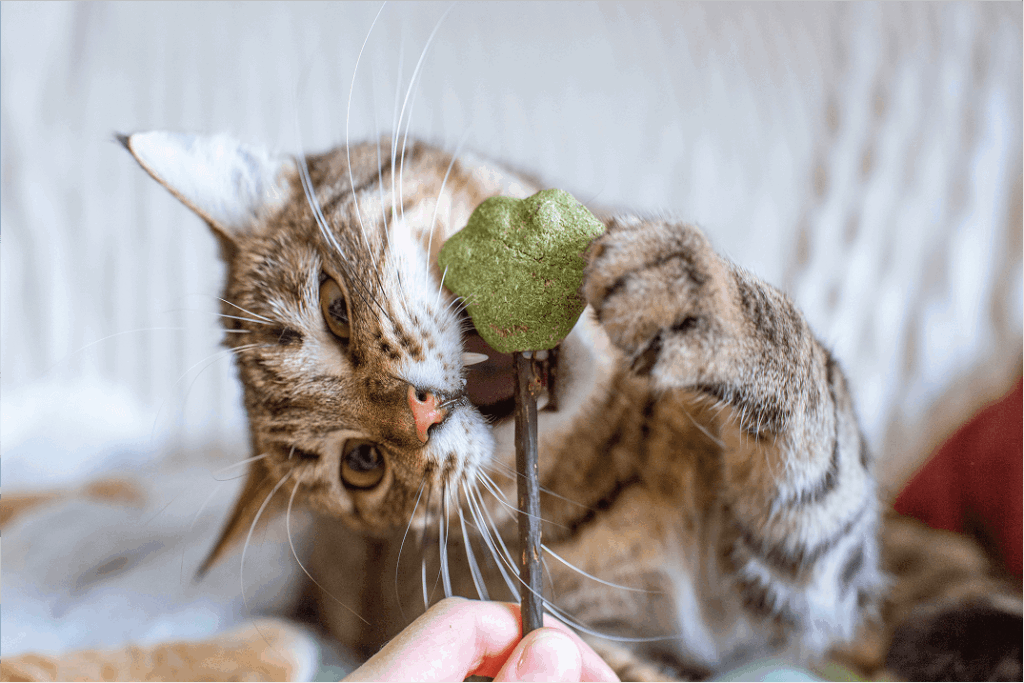Cat Treats 101: What, When, and How Much to Give Your Cat
It makes perfect sense to want to give your cat treats. She’s such a good girl! But should you be giving her treats? What kind? And how often? Let’s talk cat treats.
Are Cat Treats Safe? Yes, But With Guidelines
In general, treats are totally fine for cats to have. It’s a good idea to dole them out when your cat is doing a behavior you find particularly positive, such as:
- Snuggling up next to you
- Waiting patiently for food
- Using the litter box consistently
- Coming when called
Can you train cats with treats? Absolutely! Many cat owners successfully use treats to teach their cats tricks and good behaviors. If you’re looking for more training tips, check out our article on how to stop your cat from chewing all your stuff.
How Much Is Too Much? The 10% Rule for Cat Treats
Here’s the problem with treats: they can make your cat overweight. Treats are treats and shouldn’t constitute a large part of your cat’s daily caloric intake. They should never make up more than 10% of your cat’s daily calories. Most cats should receive no more than 20-30 calories from treats per day. Depending on treat size, this usually equals just a few pieces.
This veterinarian-recommended rule helps prevent cat obesity from overfeeding, nutritional imbalances, and reduced appetite for regular meals.
Treats are particularly tasty because they’re usually quite high in fat, salt, or other yummy-tasting—but not all that nutritious—stuff. Like cupcakes for us, treats are fine every once in a while, but probably shouldn’t be an everyday indulgence for your cat. Obesity in pets is a serious concern. If you’re worried about your cat’s weight, check out our post on 5 common health concerns in senior cats.
How Often Should You Give Cat Treats?
Again, it’s all about balance. A few treats every couple of days aren’t likely to make your cat obese.
Best practices for treat timing:
- Spread treats throughout the week rather than giving them all at once
- Use treats to reward positive behaviors
- Offer treats as an apology after necessary but unpleasant activities (like nail trimming)

What Are the Best Cat Treats? Choosing Healthy Options
There’s the rub. Unfortunately, cat treat labels can often leave a lot to the imagination. They rarely offer calorie information and can be opaque about what’s actually inside the treats themselves.
Treats to avoid:
- Pure protein treats. They can lead to an upset stomach and reduce meal appetite.
- Treats labeled “low-calorie” or “fat-free”. Often, they aren’t formulated all that differently from regular treats.
- Treats with unclear ingredient lists
Low-calorie options that cats love:
- Catnip – virtually calorie-free and highly appealing
- Cat grass – nutritious and low in calories
- Fresh herbs like parsley (in small amounts)
Homemade cat treat ideas:
- Small bite of boiled egg
- Steamed green beans
- Tiny piece of cooked chicken (unseasoned)
- Freeze-dried meat pieces
Always consult your veterinarian before introducing new foods to your cat’s diet! Because cats are so small, just a few extra pounds can make a huge difference in their overall health, so it’s important to be aware of whether or not your cat’s weight is normal. Regular veterinarian visits are the best way to ensure your feline companion doesn’t accidentally end up overweight.
Discover the Future of Pet Health
Stay ahead of the curve in pet care with updates on stem cell therapies and clinical trials that can enhance your cat’s well-being.


